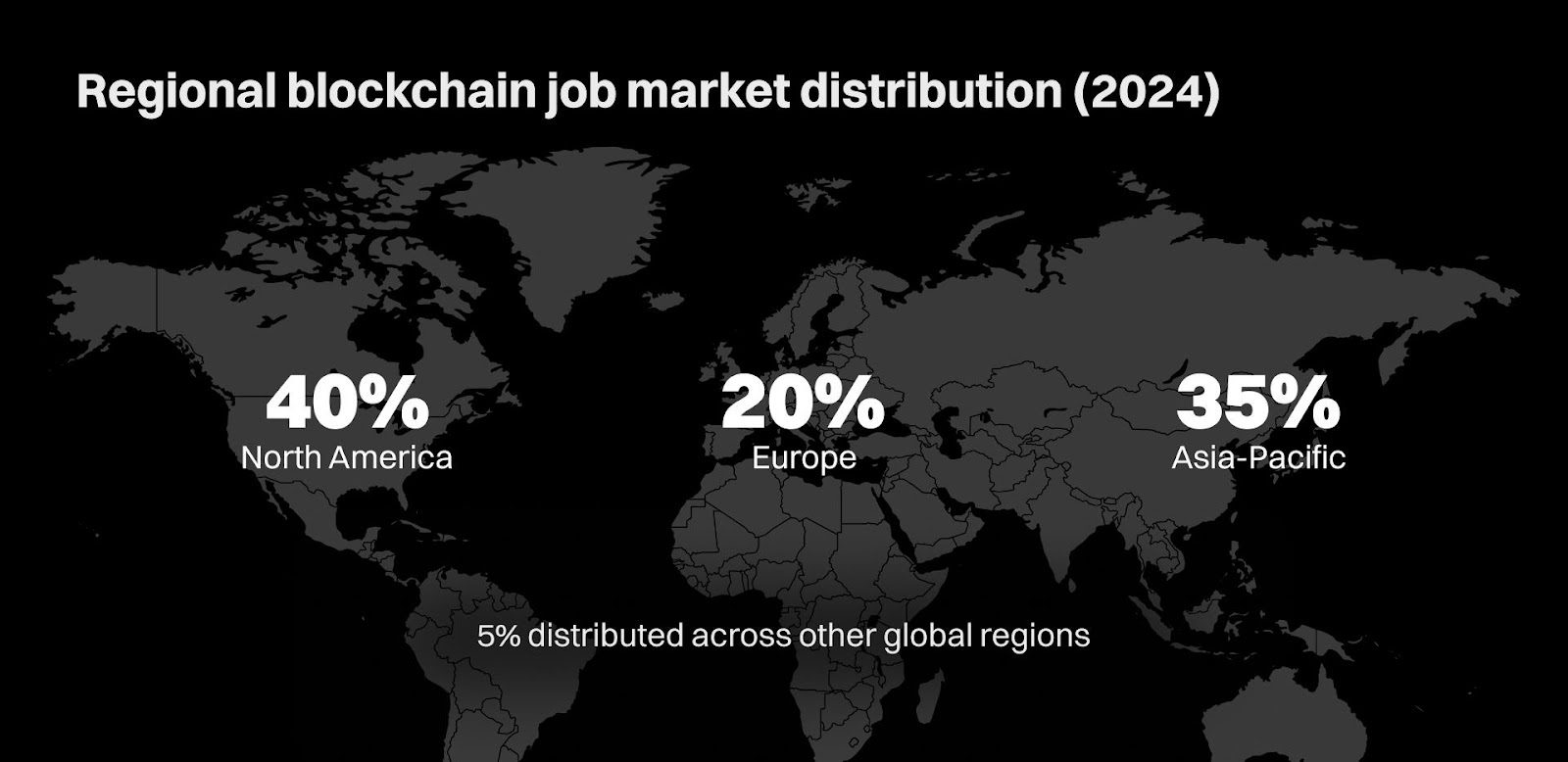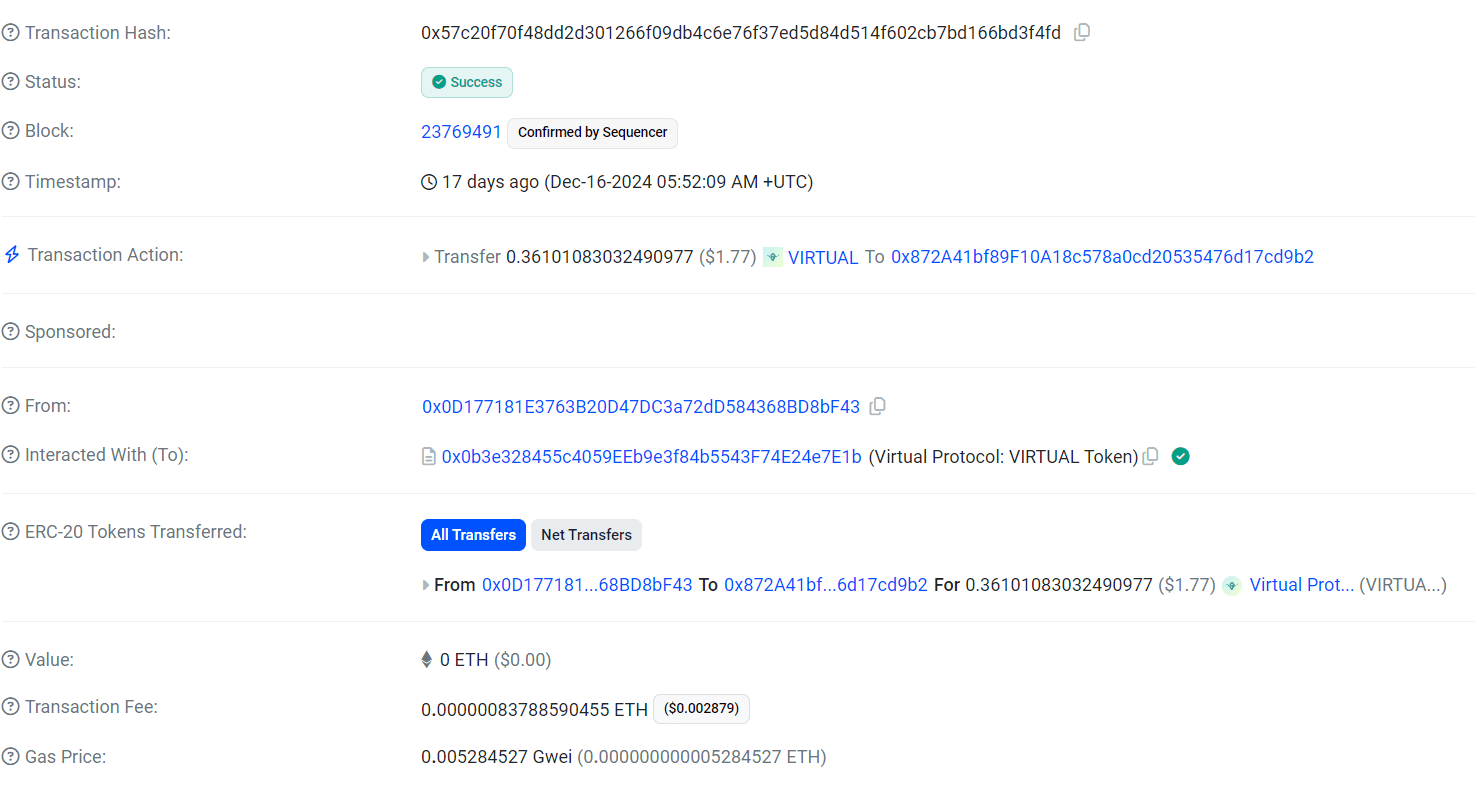The blockchain industry, while smaller than artificial intelligence (AI) in terms of job creation, has significant potential for growth. A recent Bitget Research report highlights that while AI currently boasts 1.5 million jobs compared to blockchain’s 300,000, strategic developments could narrow this gap by 2030. This article delves into the factors influencing blockchain job growth, including regulatory clarity, scalability solutions, and the increasing synergy between blockchain and AI.
Key Takeaways:
- Blockchain currently lags behind AI in job creation but shows promising growth potential.
- Regulatory clarity, particularly from initiatives like Europe’s MiCA, is crucial for boosting blockchain hiring.
- Scalability improvements, such as Ethereum’s Dencun upgrade, are making blockchain more enterprise-friendly.
- Blockchain and AI are increasingly working together, creating new job opportunities that require cross-domain expertise.
The Current Landscape: Blockchain vs. AI Job Market
As of 2024, the blockchain sector has added approximately 20,000 new jobs, sourced from platforms like LinkedIn, Web3 Jobs, and Crypto Job List. While blockchain’s compound annual growth rate (CAGR) of 45% outpaces many traditional tech sectors, it still trails AI’s impressive 57% CAGR. This discrepancy is primarily attributed to the AI industry’s maturity and the substantial venture capital investments it attracts.
According to Vugar Usi Zade, chief operating officer of Bitget exchange, AI startups received over $100 billion in venture capital in 2024, leading to over a million AI-centric job vacancies worldwide. In contrast, blockchain companies advertised approximately 20,000 openings and secured about $5.4 billion in new funding during the same period.

The Path to 1 Million Blockchain Jobs
The Bitget Research report suggests that blockchain could potentially exceed 1 million jobs by 2030 if it maintains a similar growth rate to AI. Several factors could contribute to this accelerated growth:
- Regulatory Clarity: Clear regulatory frameworks, such as Europe’s Markets in Crypto-Assets Regulation (MiCA), can encourage blockchain firms to increase hiring efforts. MiCA, in effect since December 2024, is already showing signs of easing hiring freezes. Similar clarity in the United States and Asia would further unlock global headcount plans.
- Scalability Solutions: Enterprise-grade performance is essential for widespread blockchain adoption. Ethereum’s Dencun upgrade, which significantly reduced layer-2 fees, demonstrates that blockchains can now handle corporate traffic at an acceptable cost.
While AI job listings have seen year-over-year increases between 75% and 100%, blockchain job growth remains in the 45% to 60% range. However, experts believe that the synergistic relationship between AI and blockchain could drive more balanced growth in the future.


Blockchain and AI: A Synergistic Relationship
Contrary to the idea that AI and blockchain are competing for talent, many experts argue that they are working together to create new opportunities. Yakov Lebedev, chief business development officer at 3Commas, emphasizes that combining these technologies enables the development of sophisticated financial tools accessible to a broader audience, not just large institutions.
Companies are increasingly seeking professionals with expertise in both AI and blockchain, recognizing the value of this cross-domain knowledge. The integration of these technologies is driving steady job growth in both fields as financial and tech firms transition integrated solutions from pilot programs to core operations.
Adi Ben-Ari, founder and CEO at Applied Blockchain, highlights that AI’s probabilistic nature and inherent uncertainty create a demand for blockchain’s absolute certainty. Blockchain’s ability to secure sensitive information through cryptography becomes increasingly vital as AI consumes larger amounts of personal data.
Use Cases and Future Trends
The convergence of AI and blockchain is already evident in various applications. AI agents are utilizing cryptocurrency for autonomous transactions. For instance, Luna, an AI agent on Virtuals Protocol, recently paid another AI agent from STIX Protocol for image generation services, demonstrating the practical application of these technologies in decentralized ecosystems.

Challenges and Opportunities
While the outlook for blockchain job growth is positive, challenges remain. Gaining widespread consumer adoption and deeper integration with traditional financial (TradFi) systems are crucial steps. Addressing these challenges will unlock further opportunities for blockchain to penetrate conventional consumer-oriented markets.
Conclusion
The blockchain industry has the potential to significantly close the hiring gap with AI by 2030. Regulatory clarity, scalability improvements, and the synergistic relationship between blockchain and AI are key drivers of this growth. By focusing on these areas, the blockchain sector can unlock new job opportunities and establish itself as a major player in the global tech landscape.